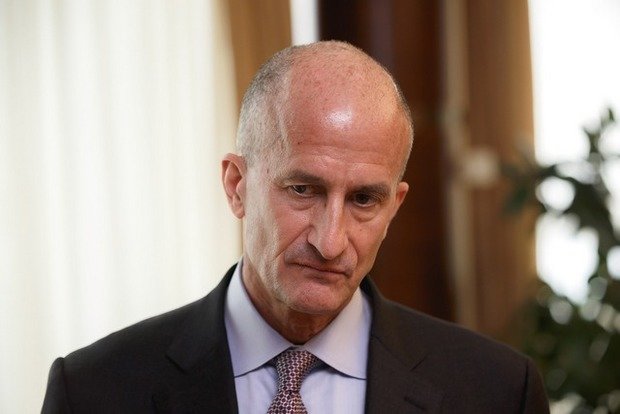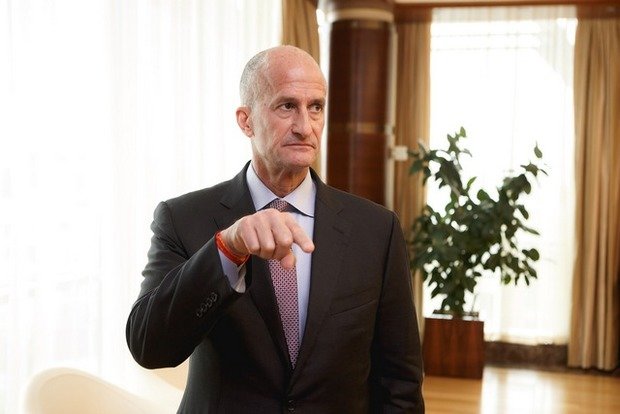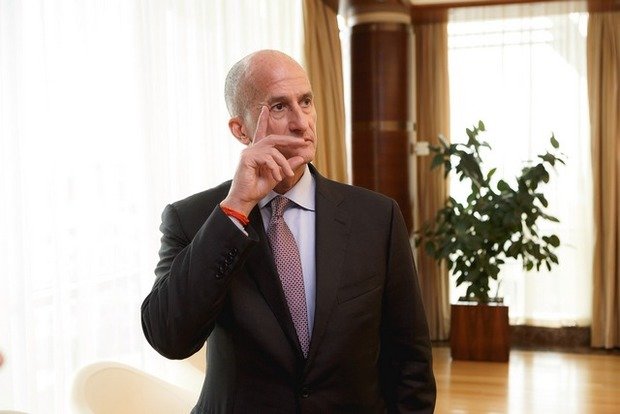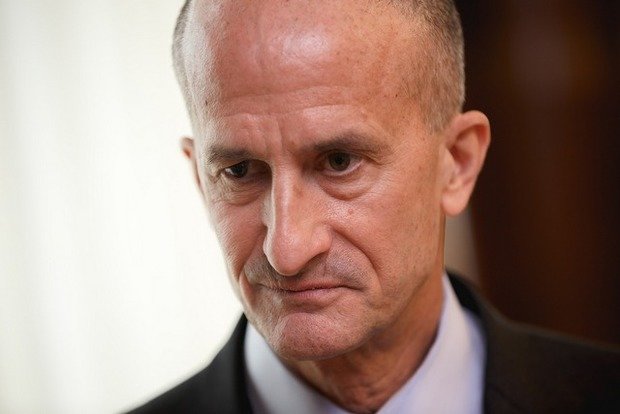John Rice: ''We're ready to take part in projects to improve reliability and efficiency of Tatarstan energy''
The chairman of GE Gas Power about results of cooperation with Tatarstan and new prospects in the republic
The world leader in the industry and digital technologies General Electric has been successfully cooperating with Tatarstan in power engineering for a long time. A delegation of the American corporation arrived in Kazan chaired by Chairman of GE Gas Power John Rice to discuss promising areas and possibilities for further joint work. In an interview with Realnoe Vremya online newspaper, Mr Rice told how GE planned to develop the cooperation with Tatarstan, localise technologies in Russia and what innovations shaped power engineering of the future.
''We have an idea to increase the capacity of the gas turbine at CHPP-3''
Mr Rice, General Electric has good experience of cooperation with Tatarstan enterprises, including companies of TAIF Group. How do you assess the results of this cooperation?
The partnership with TAIF GC and Tatarstan in general is very important for us. We have great respect for the work that President Rustam Minnikhanov is doing to establish the republic a good place for business. We think that our success here is a great example of the work that has been done. And, of course, our partnership with TAIF is the most important aspect of that work.
General Electric's Gas Turbine was successfully put into operation in the Kazan CHPP-3 1,5 years ago. How do you think the turbine is running now?
We are very satisfied with the results. It's one of the most efficient turbines in the world, in Russia, too. Its efficiency is higher than we committed. It's a good example of how we think about our commitments. We want to do what we say we're going to do and try to exceed expectations.

Commissioning our joint project – the upgraded Kazan CHPP-3 – obviously contributed to reducing the energy deficit in the region
A possibility to increase capacities of the turbine was discussed at the meeting in the head office of TAIF GC. It was said about 430 MW. Is it possible to reach such a capacity?
Our technical team understands that TAIF Group's goal is to create more output. We have very concrete ideas to get to 410-415 MW of output. And we will keep looking for more opportunities to do with in a cost-effective way.
''The development of gas turbines has taken 60 years''
Kazan is the second power facilities with such a powerful GTU. Where else have such turbines been installed? How successful are they?
They've been installed now all over the world – they total over 40 now. We have orders for 80 of these gas turbines.
How would you evaluate the role of the gas turbine in solving the problem of the energy deficit in Kazan?
I met with the Tatarstan president, and he was very complimentary of our cooperation with TAIF Group. And commissioning our joint project – the upgraded Kazan CHPP-3 – obviously contributed to reducing the energy deficit in the region.

Russian manufacturers can improve their capabilities, it will just take time
At the moment it's hard to call the attempts to create Russian equivalents of foreign gas turbines successful. What do you think our specialists lack here?
I have a strong belief in the capabilities of Russian manufacturers. Here we should understand that the development of gas turbines has taken GE 60 years. And our ability to have the technology we have today based on all of the work we did over this time. For this reason, I think that Russian manufacturers can improve their capabilities, it will just take time. Our partnership with Inter RAO and our interest to expand this partnership suggest GE is preparing to partner Russia to do that.
What regions already have localised the production of equipment based on GE technologies or still plan it?
We already have a joint enterprise Inter RAO and United Engine Corporation to manufacture localised gas turbines in Rybinsk (Editor's Note: 80MW 6F.03 turbines, 6FA previously). Our gas turbine repair centre successfully operates in Kaluga. Our joint enterprise with Rosneft to manufacture pods for ships is in the Far East, in the city of Bolshoy Kamen.
TAIF has ambitious plans to develop projects in power engineering and petrochemistry in Kazan and Nizhnekamsk. Are you going to take part in these projects further?
We certainly hope so. This is my fourth visit to Kazan and the fourth set of meeting with Albert Shigabutdinov. I consider him a good friend and a very tough negotiator. That's the way business should be conducted. In my very first meeting, Albert Shigabutdinov outlined plans of the company and opportunities for GE to partner. This time, I see great progress in our joint projects and many opportunities in front of us to expand this successful partnership.

The potential of the partnership of GE with Tatarstan in energy is quite big. For instance, our joint work can include substitution of old steam turbines for highly efficient combined cycle gas turbines
Which world technologies do you think will shape power engineering of the future?
Three parallel processes beginning with the letter D are a trend in modern global energy: Decarbonisation, Digitalisation, Decentralisation. They set the vector of development of technologies in the sector: reduction of emissions, higher efficiency of equipment by using the latest software and solution for distributed generation. GE actively works in all these areas.
In such regions as Tatarstan remarkable for dynamic growth and concentration of industry, we also see considerable opportunities to adopt advanced technologies in all the three areas. This is why the potential of the partnership of GE with Tatarstan in energy is quite big. For instance, our joint work can include substitution of old steam turbines for highly efficient combined cycle gas turbines and improvement of performance of existing turbines by upgrading them with the help of innovative materials and digital technologies.

Our power business had some disappointments, and in the next months we will have a lot to do to fix them
In this respect, might there be a joint service centre of GE and TAIF?
We discussed this with Mr Shigabutdinov and we agreed that if the installed pace in Tatarstan continued to grow, it will make sense to create such a centre in the region and consider how we could do this in partnership with TAIF.
What results did the company end 2018 with?
We have a number of businesses that performed very well in 2018: aviation, health care, oil and gas. Our power business had some disappointments, and in the next months, we will have a lot to do to fix them. I believe the transformation the company is going through now will make it stronger and lay a firm foundation for further growth of the business.
Reference
General Electric is a world leader in industry and digital technologies. The volume of portfolio of industrial orders totalled $391bn as of 31 December 2018. In 2018, the company's revenue was $121,6bn, operating cash flow is $2,3bn, adjusted free cash flow from operating activities (non-GAAP) amounted to $4,5bn.
GE has considerable financial resources, including over $30bn of cash and $40bn of open credit lines. The company also has an investment grade credit rating.
Today GE is gradually implementing a transformation plan for further long-term development and reduction of the company's debt load. Nowadays there are three GE businesses: GE Healthcare, GE Transportation and BHGE – they are in the process of dividing and will continue developing as separate companies. In the future, GE's business portfolio will be focused on segments aimed at energy and aviation (Power, Renewable Energy, Aviation).